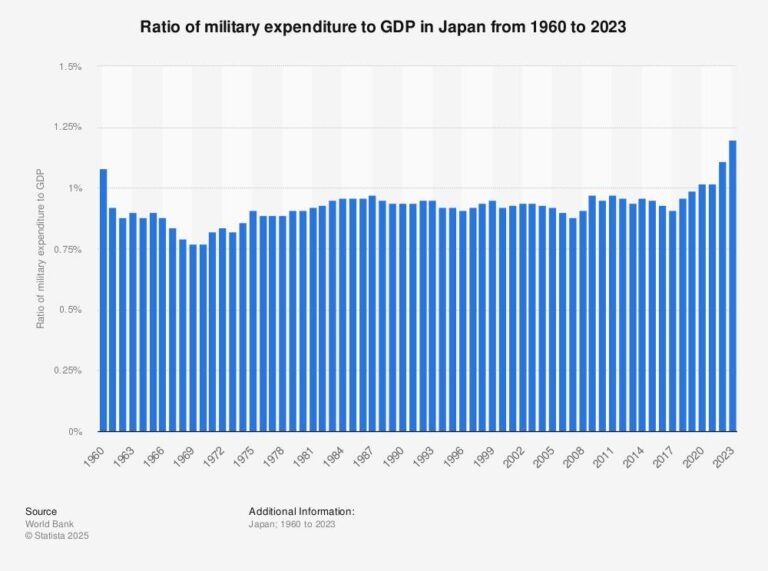Japan has announced a historic defense budget of $60 billion for the upcoming fiscal year, marking a significant increase aimed at bolstering its military capabilities amid rising regional tensions. The unprecedented funding surge prioritizes investments in advanced unmanned systems and long-range munitions, reflecting Tokyo’s strategic shift toward modernizing its self-defense forces. As China’s military expansion and North Korea’s missile developments continue to provoke security concerns, Japan’s expanded defense plan underscores its commitment to strengthening deterrence and maintaining stability in the Indo-Pacific region.
Japan’s Unmanned Systems Drive Modernization and Strategic Deterrence
Japan’s unprecedented defense allocation underscores a strategic pivot towards unmanned platforms as a core component of its military modernization. The enhanced funding prioritizes the rapid development and deployment of autonomous drones, remote-operated maritime vessels, and advanced surveillance systems. These technologies aim to provide robust perimeter defense and effective force multiplication, allowing Japan to maintain a credible deterrent without expanding traditional manned forces. This approach aligns with Tokyo’s persistent goal of balancing regional stability with self-reliance amid increasing security challenges in the Indo-Pacific.
Alongside unmanned systems, the budget bolsters investment in long-range precision munitions designed to extend Japan’s defensive reach. Noteworthy is the planned integration of missile systems capable of countering potential threats far beyond Japanese shores, enhancing strategic depth. Key focus areas include:
- High-speed surface-to-surface and surface-to-air missile capabilities
- Advanced command and control networks to support unmanned vehicle coordination
- Enhanced electronic warfare to disrupt adversary targeting
| Category | Investment Focus | Expected Outcome |
|---|---|---|
| Unmanned Aerial Vehicles | AI-integrated ISR drones | Improved battlefield awareness |
| Unmanned Surface Vessels | Coastal defense patrol bots | Extended maritime surveillance |
| Long-range Missiles | Hypervelocity guided projectiles | Strategic strike capability |
Expansion of Long-range Munitions Aims to Counter Regional Threats
In an unprecedented move, Japan is significantly boosting its strategic capabilities through the expansion of its long-range munitions arsenal. This initiative is designed to enhance deterrence and provide a robust response to evolving regional security challenges. By extending the reach of its strike options, Japan aims to strengthen its defense posture amid escalating tensions in East Asia, ensuring a credible ability to counter threats before they reach its borders.
Key features of this expansion include:
- Development of precision-guided missiles with extended operational range
- Integration of advanced targeting systems for enhanced accuracy
- Deployment plans for mobile launch platforms to increase tactical flexibility
| Munition Type | Range (km) | Status |
|---|---|---|
| Surface-to-Surface Missile | 400 | Development |
| Land Attack Cruise Missile | 900 | Testing |
| Hypersonic Glide Vehicle | 1500+ | Concept |
Experts Recommend Enhanced Joint Training to Maximize New Capabilities
Military analysts emphasize that the integration of cutting-edge unmanned systems and advanced long-range munitions into Japan’s defense arsenal demands a fundamental shift in training approaches. Joint exercises between the Japan Self-Defense Forces and allied partners must be intensified to ensure seamless interoperability across multiple domains. Experts argue that these enhanced training programs should prioritize real-time data sharing, multi-platform coordination, and adaptive tactical planning to fully leverage the technological advancements highlighted in the latest budget commitments.
To optimize operational readiness, defense strategists recommend implementing structured training modules that incorporate:
- Simulated multi-domain combat scenarios leveraging AI and virtual environments.
- Cross-training across air, sea, and cyber units to build cohesive joint task forces.
- Regular joint drills with US and regional allies to refine combined response capabilities.
| Training Focus | Frequency | Key Outcome |
|---|---|---|
| Unmanned Systems Coordination | Quarterly | Improved swarm control |
| Long-range Munitions Deployment | Bi-annual | Enhanced precision strike |
| Joint Cyber Defense Drills | Monthly | Strengthened cyber resilience |
To Wrap It Up
As Japan moves forward with its unprecedented $60 billion defense budget, the strategic emphasis on unmanned systems and long-range munitions signals a significant shift in its military posture. This investment reflects Tokyo’s response to evolving regional security challenges and highlights a broader trend toward modernization and enhanced deterrence capabilities. Observers will be watching closely to see how these developments influence the balance of power in the Indo-Pacific region in the coming years.




